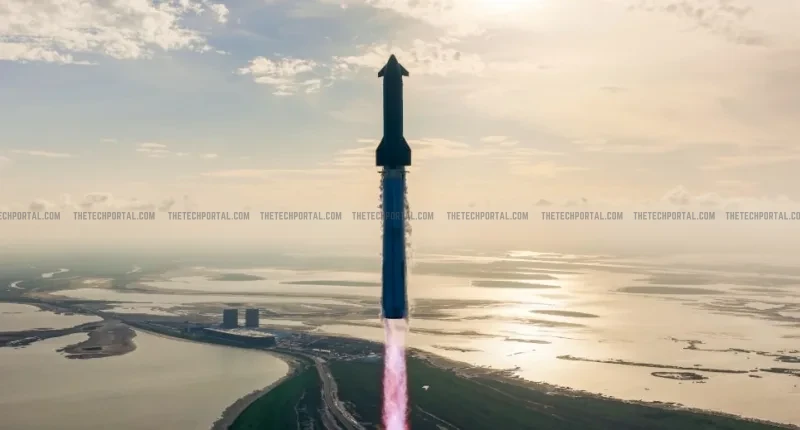SpaceX’s Starship rocket achieved a major milestone on August 26 by successfully deploying a payload into orbit for the first time. The launch (which was cancelled on August 25 due to an unspecified problem) took place at around 6:30 pm local time (5:00 am IST on August 27) from SpaceX’s Starbase facility in South Texas. This marked the 10th test flight of the company’s next-generation heavy-lift vehicle. The mission carried eight dummy Starlink satellites, designed to test the rocket’s deployment system.
About 30 minutes after liftoff, the upper stage of Starship released the satellites into orbit using a newly developed ‘Pez-style’ dispenser, which ejects satellites one at a time. The successful deployment clearly represents a critical validation of Starship’s payload-handling capabilities. Following liftoff, the Super Heavy booster separated from the upper stage and executed a controlled splashdown in the Gulf of Mexico. The upper stage continued its orbit before re-entering the atmosphere and completing a planned splashdown in the Indian Ocean. While reports indicate the impact may have caused some breakup of the stage, the primary objective (the deployment of the payload) was successfully achieved.
“Over the course of a flight test campaign, success will continue to be measured by what we are able to learn, and Starship’s tenth flight test provided valuable data by stressing the limits of vehicle capabilities and providing maximum excitement along the way,” the Elon Musk-owned space tech firm said.
The latest success comes after a series of challenging tests in this year, during which previous Starship missions experienced structural failures and explosions. Actually, in June 2025, a SpaceX Starship prototype (known as Ship 36) exploded during a static-fire test at the company’s Starbase facility in South Texas. That test was part of preparations for the rocket’s tenth flight. Earlier, in May 2025, another prototype exploded during ascent after a malfunction in one of its engines. Similarly, in March 2025, a different Starship vehicle was destroyed during re-entry after losing control at high altitude. Other test flights in 2025 also faced issues like heat shield damage and guidance system failures.
However, despite challenges in its test program, the company is projected to earn $15.5 billion in revenue this year, driven by frequent rocket launches, key government contracts, and the growing reach of its satellite services. The company is also being seen as a strong contender for a major role in the US government’s proposed ‘Golden Dome’ missile defence system. The timing of this latest development becomes even more significant, as Starship is also planned to play a key role in NASA’s Artemis III mission, which aims to return astronauts to the Moon in 2027.
The Tech Portal is published by Blue Box Media Private Limited. Our investors have no influence over our reporting. Read our full Ownership and Funding Disclosure →






